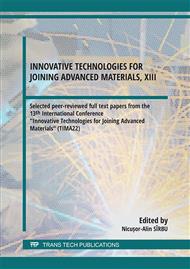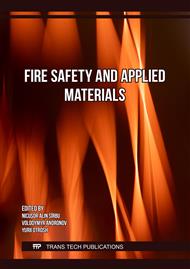p.3
p.11
p.17
p.25
p.35
p.43
p.51
p.61
p.69
Morphology Changes in the One-Step Synthesis of Cu2O/ CuO by Dealloying Amorphous Ribbons in Alkaline Solution
Abstract:
The dealloying technique has been a well-known process since antiquity, but recently it has started to be used to produce nonporous metals and metal oxide semiconductors for various electrochemical applications. The dealloying process is carried out in both acidic and basic solutions, depending on the base material and the desired application. In this study, Cu-based amorphous ribbons were dealloyed in alkaline aqueous solution at room temperature, keeping the temperature constant and varying the concentration of the solution. This process has the advantage that both dealloying of the ribbons and nanostructured copper oxide synthesis on their surface is obtained in one step. For the preparation of copper-based amorphous ribbons, the melt-spinning process was used, and the composite obtained consisting of nanopores decorated with Cu2O/CuO nanoparticles makes it an ideal candidate for electrochemical applications. For the investigation of the structural, morphological, and optical properties of the obtained materials, X-ray diffraction (XRD) and scanning electron microscopy (SEM).
Info:
Periodical:
Pages:
35-41
Citation:
Online since:
August 2023
Keywords:
Price:
Сopyright:
© 2023 Trans Tech Publications Ltd. All Rights Reserved
Share:
Citation:



